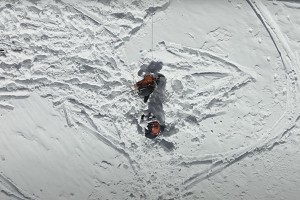
Steve Long reviews the RescYou, Mammut's innovative crevasse rescue device, which can be used to rescue yourself or other climbers: the device is attached to the harness (self-rescue) or a fixing point (rescue of another person). After this, two rope clamps are clipped to the rope and the compact six-fold pulley, which connects the two rope clamps, is operated. Is it time to jettison the prussik loops?
When I first heard about this new product my interest was piqued, because as many readers will know I have experimented with techniques for improvised rescue and taught these techniques for many years. The RescYou is basically a mini 'block and tackle' system giving a mechanical advantage of 6:1. The main intended function appears to be for crevasse rescue, which means that it needs to be light, as most people don't make a habit of throwing themselves into crevasses. So the first thing that I did was weigh the RescYou pack: it weighs the same as 5 karabiners (the whole thing weighs 400g), so if we subtract the weight of the karabiner included, we get the equivalent weight of 4 krabs. So is it worth the extra weight? Well, first let's see if the gadget does what it says on the tin, then we can discuss whether it's a heavy luxury or a lightweight necessity!
The RescYou arrived during the ice climbing season and I was asked to submit a review by March, before the main ski-touring season. So with testing the gear in real crevasse situations impractical within this time frame, I used a couple of opportunities to test the gear, firstly by handing it to some novices to rescue techniques, and secondly at the opposite end of the spectrum: a gathering of trainers at an international ski touring seminar in Slovenia. This provided a great insight into the two main intended consumer groups for this product. My novice rescue group were all trek leader students on a course in Nepal. The Nepalese love anything to do with ropes and rescue, so they were delighted to try out the kit. See photos below.
My test kit arrived without an instruction card - obviously these will be available with the non-sample RescYou's. There's a pouch on the front but mine was empty other than a QR code which just links to a product photo on the Mammut site where there are a couple of promotional videos. So I just handed the kit out and asked the lads to rescue their friend who was hanging from a balcony.
"...Within minutes they had connected the kit and were hauling him up with ease."
Within minutes they had connected the kit and were hauling him up with ease, apart from the fact that the tubular handle often seemed to be in the wrong place so they would grab the thin cord instead, which was painful. They soon worked out that you can wrap the cord around the tube, which was a better solution, but later we worked out that the proper solution is to pull the cord through the handle and use the cleated notch to lock the cord.
Nepalese students getting to grips with the Mammut RescYou:
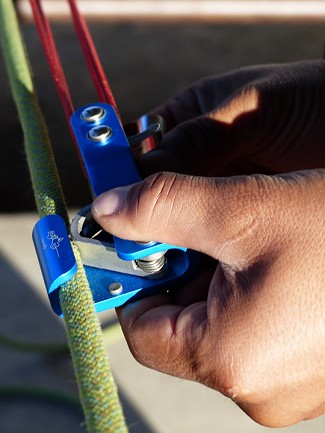
So much for hoisting. However, what about 'progress capture' – locking the rope gained when the two 'block' clamps meet, in order to slide the clamp back along the rope for the next hoist? The first attempt resulted in the 'casualty' dropping back to his starting point, because you need to remember to manually pull all the rope through the anchor (grey) clamp before releasing the hoisting (blue) clamp.
After this setback though, our novices were quickly able to hoist the casualty with ease, certainly easier than a simple 3:1 'Z-hoist', which is the only system I would expect a novice to remember. There's not much mechanical advantage over a more complex hoist using 3 pulley points though (known as an improved Z-hoist) which with some practice can be set up quickly using a few items of normal climbing gear (karabiners and prusiks), with the optional addition of light extras such as a Ropeman, a Micro-Traxion, and/or a Tibloc – but these improved systems do require more practice, so a novice is unlikely to remember them in a crisis.
"The device is also designed for self-rescue from a crevasse, and this is where it perhaps scores more highly"
The device is also designed for self-rescue from a crevasse, and this is where it perhaps scores more highly because it's easy to set up and the casualty merely pulls on the draw cord to lift him or herself, pulling the slack rope through the grey clamp from time to time to allow the hoist clamp to be reset in position. This is particularly useful for 'top-heavy' casualties, who often find normal prusiking very difficult. The gadget can be set up very quickly after a fall and its also much easier to use it to bypass knots in the rope (which are often used in glacial travel to 'catch' on the crevasse lip and brake the fall). The RescYou is easy to fit onto the rope, with an ingenious locking mechanism that is pulled into place with a draw cord.
What did the seminar experts make of the RescYou? Again, they found it easy to set up, but again found the need to pull slack rope through manually counter-intuitive, so again all the good work was initially lost by dropping the casualty back to his starting point! However, this group quickly found a way to eliminate this requirement by running the slack end of the rope through a karabiner/pulley on the anchor and back through another pulley attached to the RescYou handle, giving an additional mechanical advantage.
I can put one worry to bed though, which is that intuitively it seems as if using a 6:1 pulley would put an enormous strain on the belay, which is a worry with snow anchors. But mathematics shows that if the system is set up to pull towards the anchor, the load is in fact reduced while you are hoisting! Libby Peter and I tested this maths with a load cell and sure enough this confirmed the maths. You can watch a nice little video about this here.
There is no doubt that the device works effectively as a ready-made pulley system, although you have to take care nonetheless to pack it away without any tangles. Once a twist gets into the system it's quite an exercise in problem solving to get all the strands running freely again, as I once discovered to my cost. It is best to pull the two pulleys close together, then wrap the cord around the strands and the handle before packing it away in its bag. It should be borne in mind that to raise the victim by one metre you have to pull 7 metres of rope through the pulley system, so that means regularly sliding the blue clamp back down the rope.
"My concern though is that teaching this system makes students reliant on the hardware"
My concern though is that teaching this system makes students reliant on the hardware, because a block and tackle system is fundamentally different to a Z-hoist system, which requires a locking pulley; either improvised with a prusik or built using a Ropeman or Micro-Traxion. The bag is designed to be clipped to a harness gear loop using a mini-karabiner-like hook, but unfortunately the diameter of my gear loops proved too big to use this.
Would I carry a RescYou on a normal glacial trip?
Personally I would rather just carry the same weight in karabiners and prusiks (which have multiple uses), with the addition of a locking pulley, which can also be used easily for the occasional sack-hauling pitch. But it would be worth considering for more committing glacial crossings, where expedition rations are carried. I remember using heavy-duty block and tackle rigs in the Antarctic and Spitsbergen, so this device would be a useful replacement. I think that the device also has applications for more specialised functions such as for climbing activities for people with disabilities, though the cord is too light for extended use such as big wall challenges.
* A couple of notes from Mammut: The handle has been tweaked on the production models hence not having to pull on the cord. The cord is actually rated - and is 3.5mm in diameter.
Photo Gallery:
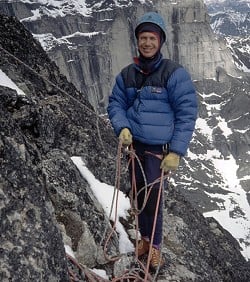
About Steve Long
Steve Long (51) is an International Mountain Guide currently working as part-time Technical Officer at Mountain Leader Training UK and also serving as the president of the UIAA's Training Standards Working Group. He is a founding member of the Association of Mountaineering Instructors, and worked at Plas y Brenin as a senior instructor for 12 years. He is the author of the popular instructional DVD Self-Rescue for Climbers and also the definitive text for mountain leaders: Hillwalking, as well as various over projects such as the current Tremadog guidebook.
Steve is a keen and active climber, equally at home on rock or ice; and has visited every continent for mountaineering activities. Climbing highlights include one of the few British ascents of Cerro Torre, several routes on the Troll Wall, canyoning and big walling in Borneo (Low's Gully), a winter ascent of the Dru's French Direct and various other big walls; the most recent being the Fish route on the Marmolada. Steve also regularly works with climbing federations from other countries to help them set up their own leader and instructor training schemes: current projects include Nepal, Ladakh, Israel, Turkey and Portugal.



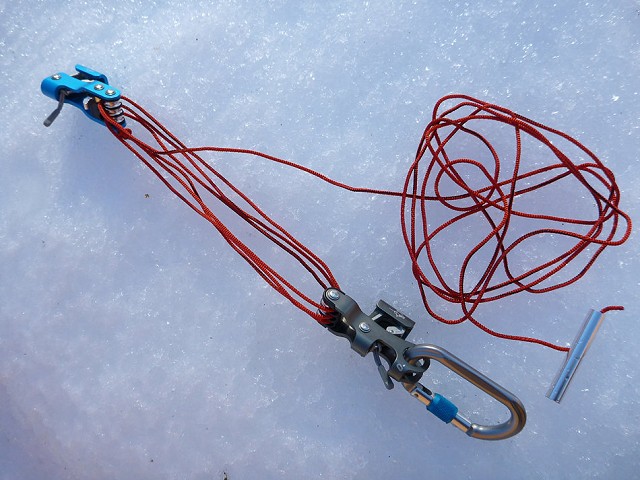
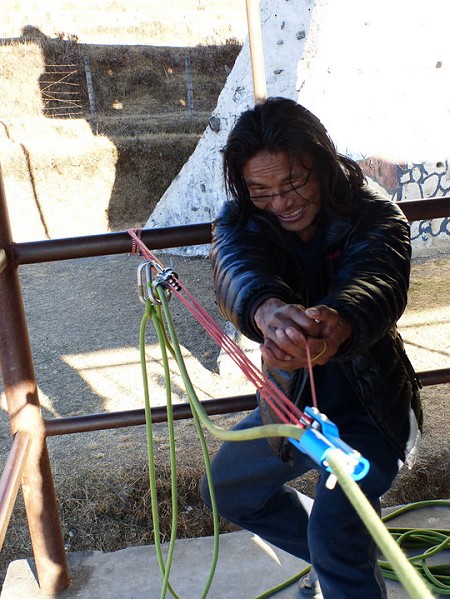
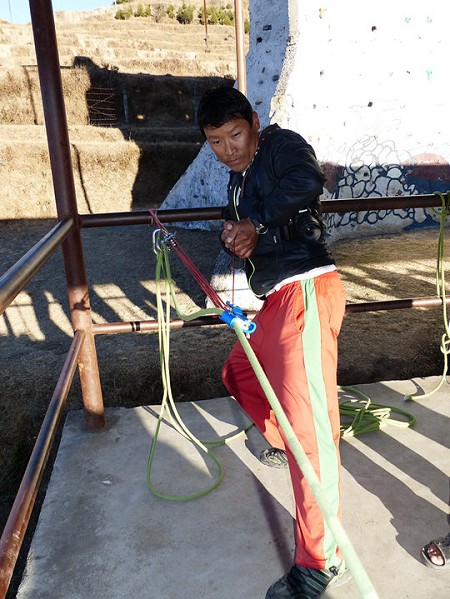
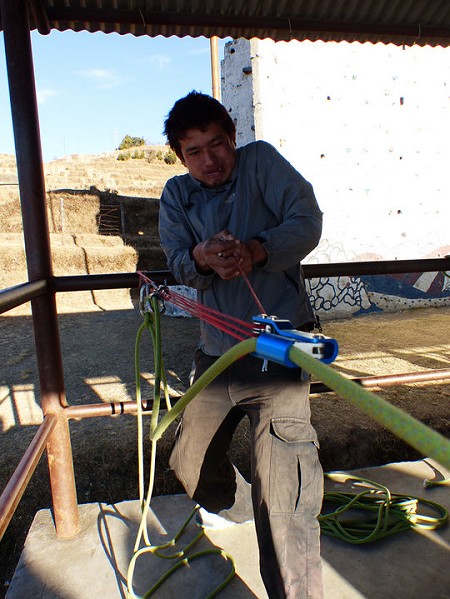
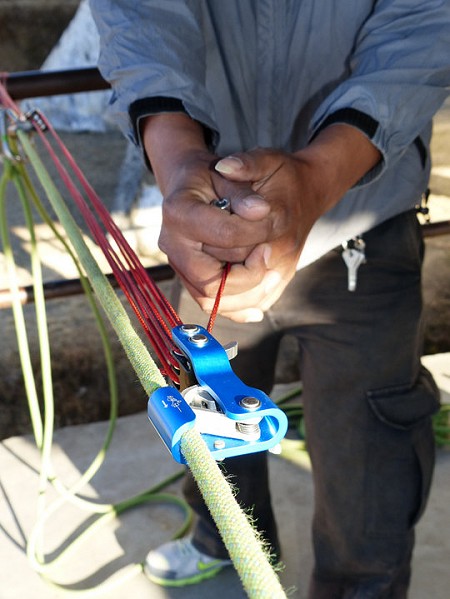
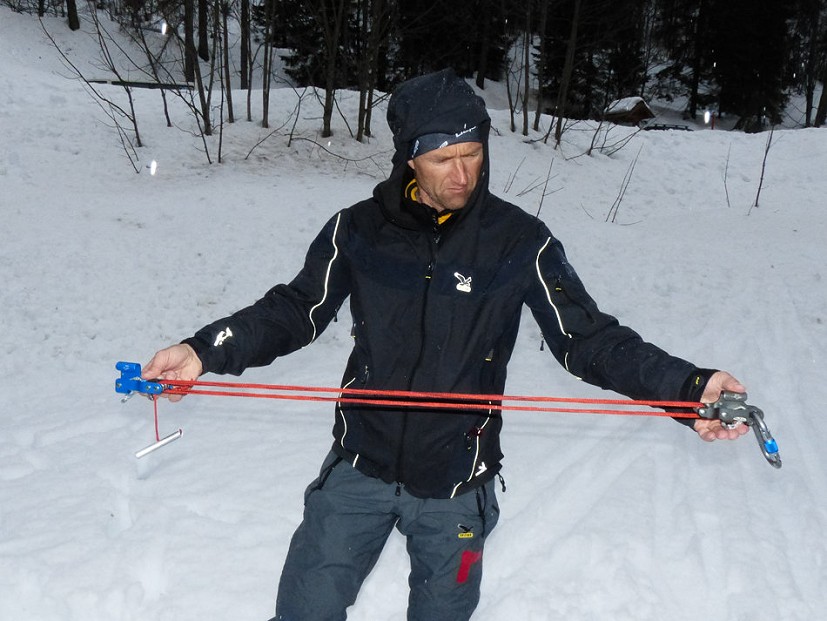
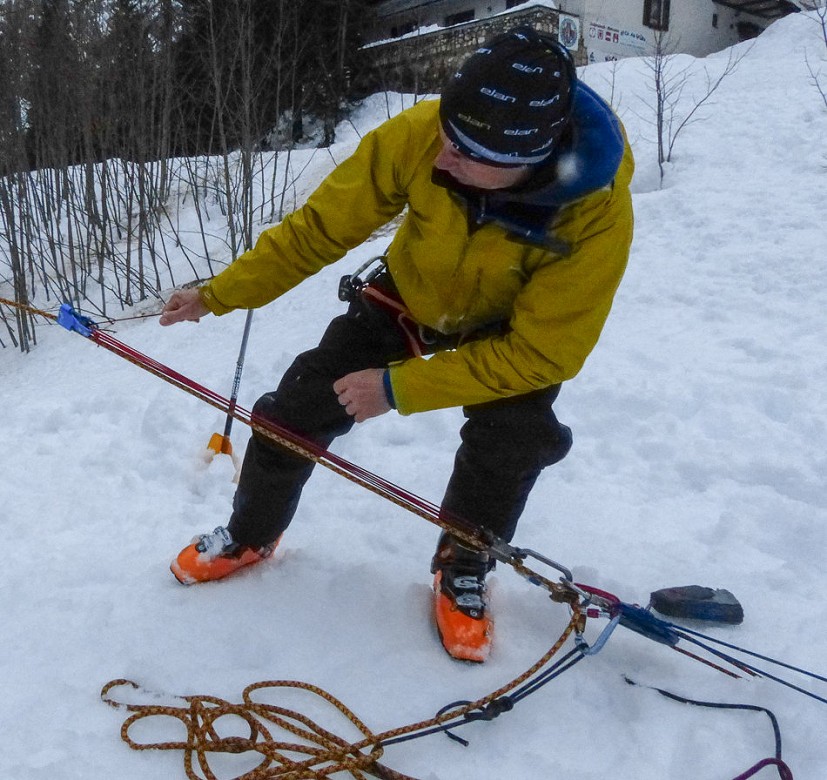
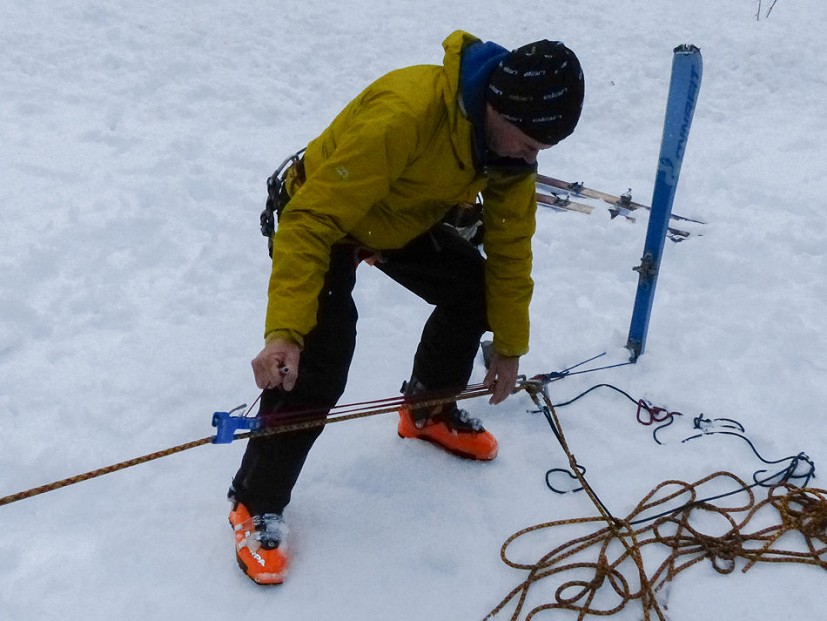

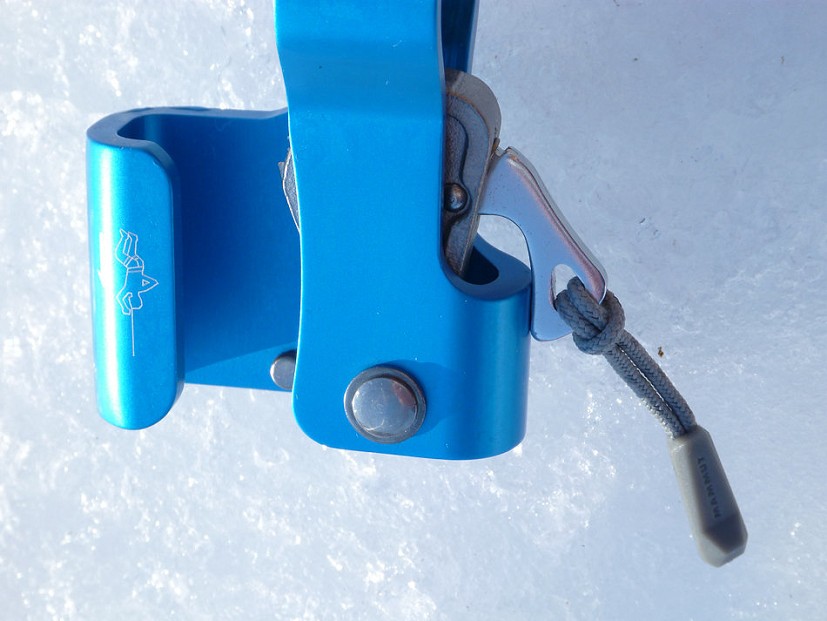
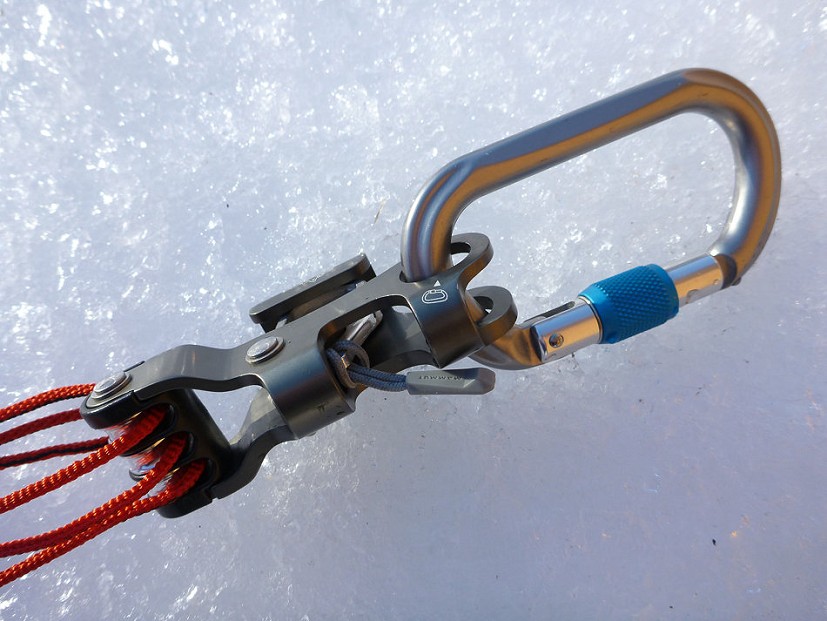
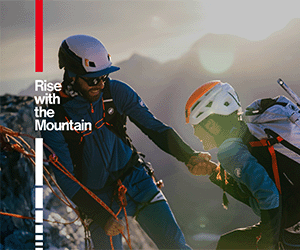
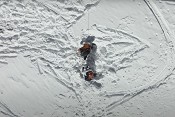
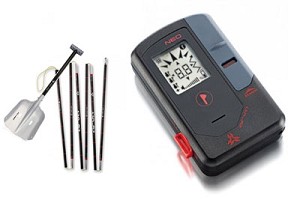
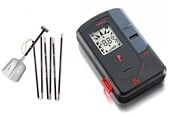

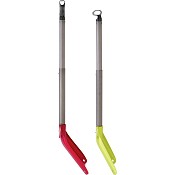
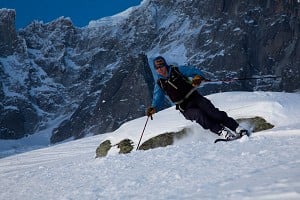
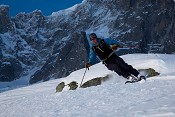
Comments